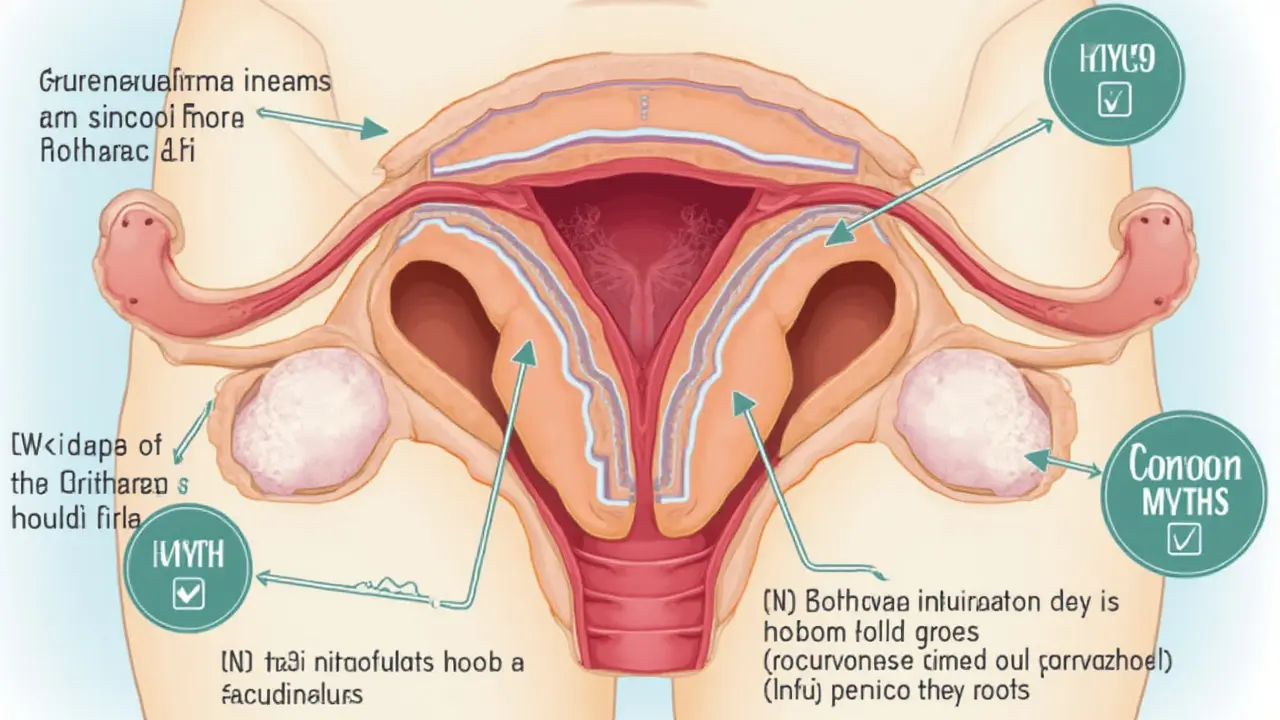You might be surprised to learn that squirting is one of the most misunderstood—and sometimes polarizing—topics in sexual wellness. A lot of conversations swirl around it: some people are wildly curious, some are skeptical, and others have had the experience and wonder what’s really happening. One big shocker? Despite centuries of speculation, science only recently agreed that female ejaculation is real and not just some made-up myth. Turns out, it’s not as rare as many think—just unspoken and rarely shown in a realistic way. That's left a lot of folks guessing, and sometimes feeling confused or insecure. Ever heard someone say, “Is it pee?” or “Can every woman do it?” Honest discussions are hard to find, so let’s get brutally real and crack open the truth.
What Exactly Is Squirting? Busting the Myths
Ask ten people what squirting is and you’ll get ten different answers. Some say it’s a gushing orgasm, others think it’s just a weird porno trick, and a few worry it’s just involuntary urination. Here’s the medical scoop: squirting, sometimes called female ejaculation, is when a person with a vulva expels a clear or slightly milky liquid from the urethra during intense sexual arousal, often—but not always—during orgasm. Research like a 2015 study in the Journal of Sexual Medicine found that the fluid mostly comes from the bladder, but it’s not identical to urine. It doesn’t have the same color, smell, or chemical makeup. The Skene’s glands, often called the “female prostate,” add their own stuff to the mix, making the fluid unique.
For decades, science ignored it, or worse, dismissed it as a hoax. It’s crazy to think the first clinical paper about it didn’t come until 1982, and for decades people only saw it depicted (usually unrealistically) in certain adult films. But today, more studies have shown that plenty of women squirt when the right buttons are pressed. The mysteries around female pleasure run deep, often tangled up in shame and secrecy. Many women have squirting experiences and feel too embarrassed or confused to talk about it, worrying there’s something wrong with them. The reality? Surveys suggest roughly 10–54% of women have experienced some squirting at least once, even if it was just a dribble—not all fireworks and fountains.
Now, about that “is it pee?” debate—it keeps resurfacing. In a nutshell, some of the fluid does pass through the bladder and urethra, but the chemical markers, like prostate-specific antigen, show there’s more going on than just urine being expelled. The main ingredient in the fluid is water, with some traces of urea, creatinine, and PSA, so it looks and feels very different than a quick bathroom break. The body is wild, right? There’s even debate about whether every woman can squirt, and the answer isn’t clear-cut. For some, it’s easy; for others, it’s elusive or just not part of their experience. No one’s broken if they don’t squirt. But if you’re curious, exploring is totally legit and can be seriously fun.
The Science Behind Squirting: How the Body Produces the Wave
Your body is a machine of wonders. When you’re sexually aroused, blood rushes to your genitals, and the G-spot—a sensitive spongy area about two to three inches inside the front wall of the vagina—starts swelling. This spot is packed with nerve endings and glands, including the Skene’s glands, which sit near the urethra. When this area is stimulated, things get interesting. Squirting usually happens with strong, rhythmic G-spot stimulation, buzzy mental arousal, or sometimes just the right combination of physiological and emotional ingredients. The Skene’s glands kick into high gear, and fluid starts building up behind the urethra.
In a moment of peak excitement or orgasm, muscles in the pelvic floor contract hard, pushing the built-up liquid through the urethra in a gush or stream. Some women report a huge, overwhelming feeling that something “has to come out.” It’s a full-body event—think sneezing with your whole being. It’s messy, it’s powerful, and it’s emotional. For some, squirting is accompanied by a strong orgasm, but for others, the physical ejection can happen totally separately from climax.
Not every orgasm leads to squirting, though, and not every woman squirts. Hormones, muscle tone, emotional state, and even hydration all play a role. If you’ve had lots of G-spot play and nothing’s happened, you’re not alone—a European study in 2014 tracked over 400 women and found huge variety in squirting experiences, even among partners who tried more than once. Sometimes, mental barriers or hang-ups around shame can prevent the body from letting go. The key? Relaxation, trust, and taking the time. Some experts even recommend drinking some water an hour before sex if you want to explore squirting, because being too dehydrated can make it harder for your body to build up the fluid in the first place.
And there’s absolutely no shame if it doesn’t happen. Squirting isn’t a measure of sexuality, prowess, or even “completeness.” Human bodies are wonderfully unpredictable, and each one has its own responses. Some women say the sensation is incredibly satisfying, others say it’s just “wet fun” or even too intense. Still, understanding the process helps both partners relax—no one has to panic that something’s weird when it’s all just biology doing its thing.

Tried-and-True Tips for Exploring Squirting
If you’re reading this, maybe you’re curious to give squirting a shot. Good news: there’s no magic trick, but there are tried-and-true tips that can make it easier and way more pleasurable. First, mindset matters. Many people get snarled up by fear of mess, embarrassment, or doing it “wrong.” Start slow—solo or with a trusted partner who sees this as an adventure, not a performance.
Get comfortable with your body and make the space cozy. Put down towels or waterproof pads—seriously, it’ll help everyone relax without worrying about sheets. Next, foreplay is your best friend. Build up arousal with whatever feels good: kissing, oral, caressing, talking dirty—anything that gets the pulse racing. Squirting usually doesn’t happen in a rush.
Now, about the technique: G-spot stimulation is key. Slide a well-lubricated finger (or two) inside, palm up, and make a steady, “come-hither” motion toward the belly button. Slow and firm wins the race; too fast can be distracting. Pay attention to feedback—some people need a lot of pressure, others just a little. Let yourself go with the pleasure instead of focusing on the “goal” of squirting. Sometimes, women feel a strong urge to pee just before squirting—that’s normal. If you feel this, try not to clench up; it’s part of the release. Some folks find using sex toys made for G-spot stimulation (curved and firm) helps ramp things up, especially with vibration added.
Lube matters. Really. The G-spot region responds better when everything’s super slick, so add more than you think you’ll need. Also, try different positions; lying on your back with your hips propped up on a pillow can give easier access and boost the sensations. If things feel stuck or tense, switching positions or techniques can break the plateau.
Don’t forget about communication. Partners should check in with each other: “How does this feel?” “Want to try something different?” That safety and laughter can turn nervousness into real pleasure. Aftercare matters, too—have something soft to clean up, and maybe a cuddly blanket or drink on hand to keep the mood light.
- Create a chill, judgement-free atmosphere
- Hydrate beforehand for better fluid build-up
- Use lube—generously
- Stay relaxed and ditch expectations about squirting
- Work on G-spot stimulation with slow, steady, “come-hither” movements
- Pause to breathe and check in with how it feels
- Switch up angles and pressure; no one size fits all
- Focus on pleasure, not results—the journey is the fun part
Practice makes pleasure—not always perfection, but new sensations, laughs, and a better sense of what your body can do. One tip pros swear by: after bringing the G-spot close to the edge, some people find a sharp increase in pressure, then a sudden release, works best. But again, no pressure—every body’s recipe is unique.
Squirting, Sex, and Relationships: Owning the Conversation
One thing that gets left out of the squirting hype: it’s not just about performance, but real communication and comfort. Hollywood and adult films often show wild scenes where partners squirt buckets, but real life isn’t always like that. Many women squirt a little, some a lot, some never. The most important thing is tuning into pleasure, busting shame, and sharing honest talk with partners.
Couples who explore squirting together often discover stronger trust, more laughs, and fewer sexual hang-ups. Squirting can open the door to talking about fantasies, limits, and dreams. Some women say that once they stopped worrying about “getting there,” their sexual confidence soared. Sex therapists argue regularly that adventure paired with comfort leads to deeper connection. Honest conversations—like, “Hey, I read about squirting and I want to try,” or “Can we go slow and see what happens?”—build intimacy, not pressure.
And let’s be real: sex is supposed to be messy sometimes. If you’re worried about ruining sheets or feeling embarrassed, you can miss out on the best parts. Investing in a waterproof blanket or prepping a space for exploration doesn’t just save laundry, it tells your brain it’s okay to let go. Plus, sharing your curiosity without shame invites your partner to do the same. Trust and laughter are often the secret sauce to sexual breakthroughs.
Most partners are more supportive than people imagine, and taking away pressure about “having to squirt” or “doing it right” sets everyone up for success. The body is unpredictable—a little humor goes a long way. For some, just talking about it is a game-changer: “Did you know the female prostate exists?” sparks curiosity and sparks real connection.
Sexual pleasure isn’t measured in ounces of fluid or whether you squirt every time. It’s about exploring, listening to each other, and owning what feels good. If squirting happens, awesome. If not, you’ve discovered more about yourself and what turns you on. The ultimate win is pleasure, not performance—anyone can join that wave.
If you’re ready to jump in, remember: the best guide is your *own* sensation, and sharing it with someone who cheers you on makes all the difference. If you want more honest info, there are health clinics, sex educators, and books out there that answer real questions without judgement. But let’s be honest: nobody knows your body better than you do, and every exploration can lead to something unforgettable—even if it’s just a great story to tell. Now, enjoy the ride and see where the wave takes you.




